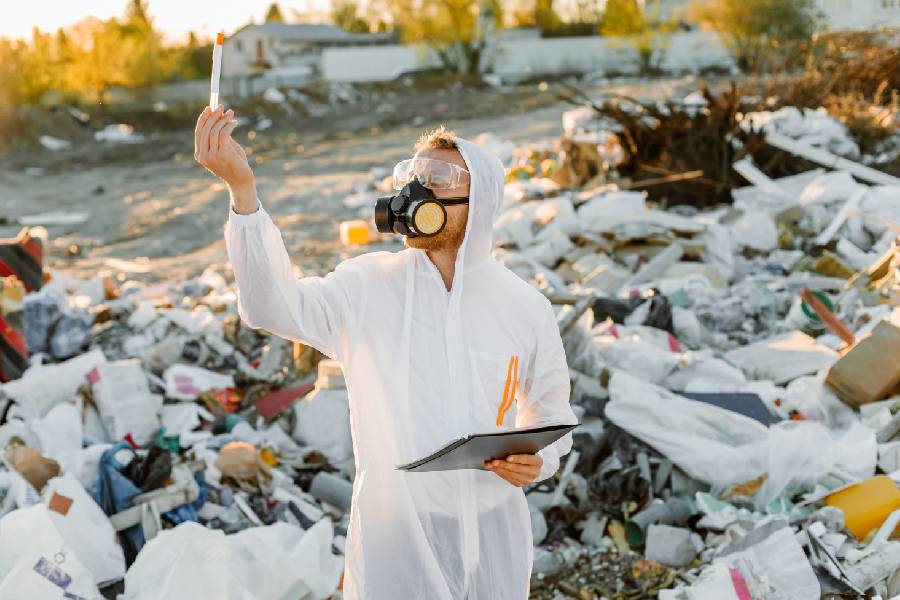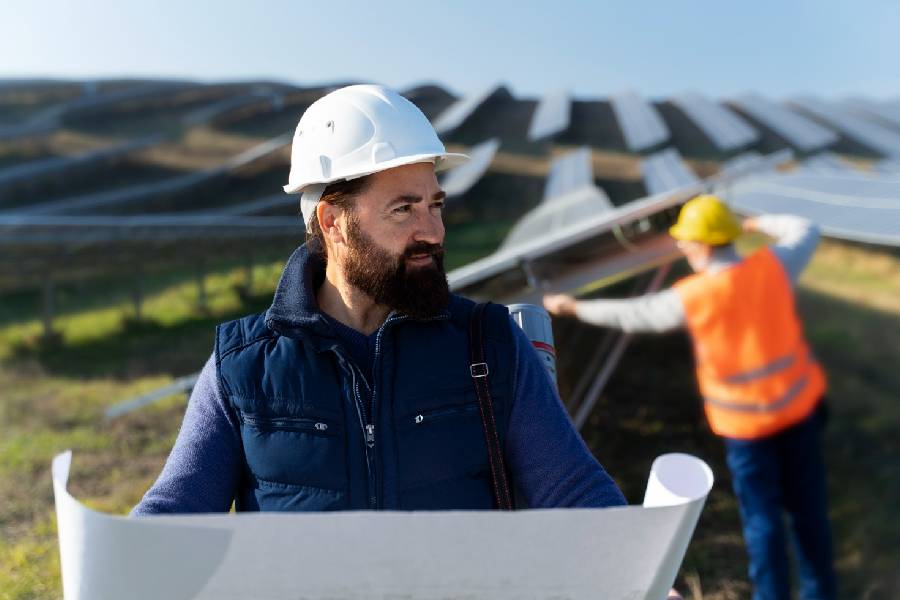Environmental engineering is a broad field with diverse areas of specialization. As ecological challenges have grown more complex, different branches have emerged within environmental engineering to address specific issues.
But what exactly are the different types of environmental engineering, and how do they work together? Recognizing the breadth of knowledge across specialties reveals the interdisciplinary nature of environmental problem-solving today.
At Cypress Engineering, our environmental engineers are innovative problem-solvers who use their expertise to find sustainable solutions for the planet’s well-being. This field contains diverse specializations, each dedicated to specific aspects of ecological conservation. So, we will explore the key environmental engineering specializations.

Types of Environmental Engineering
This diverse field encompasses several key specializations, each with a specific focus and set of responsibilities. These subfields are vital in addressing a wide range of environmental challenges. Here are some of the primary types of environmental engineering:
1. Water and wastewater engineering
Water treatment and purification
Water and wastewater engineers play a critical role in ensuring the availability of safe and clean drinking water. They design and oversee the operation of treatment plants that remove impurities, pathogens, and contaminants from raw water sources.
Also, cutting-edge technologies, such as chemical treatment processes, filtration systems, and advanced disinfection methods, are employed to make water safe for consumption.
Wastewater treatment and recycling
Recycling and reusing treated wastewater are sustainable practices gaining prominence. So, engineers work to develop efficient systems for reclaiming water for irrigation, industrial use, or even drinking water in some cases.
Our environmental engineers specialize in wastewater management. They are responsible for designing treatment facilities that purify sewage and industrial wastewater before its safe release into the environment.
Stormwater management
Stormwater engineers focus on minimizing the environmental impacts of urban runoff and heavy rainfall. So, we design systems that prevent flooding, protect water quality, and manage stormwater in a way that reduces its adverse effects on ecosystems. Our engineers also employ techniques like green infrastructure, which harnesses nature to manage stormwater and improve water quality.
2. Air quality engineering
Air pollution control technologies
Our air quality engineers aim to mitigate air pollution and enhance atmospheric quality. They specialize in developing innovative technologies to reduce emissions from industrial processes, vehicles, and other sources. Techniques like electrostatic precipitators, scrubbers, and catalytic converters are instrumental in removing pollutants and enhancing air quality.
Indoor air quality improvement
Indoor air quality engineers focus on enhancing the air quality within buildings, where people spend the majority of their time. They design ventilation, air filters, and air quality monitoring systems to eliminate contaminants like mold, dust, and volatile organic compounds (VOCs). This specialization is crucial for maintaining a healthy and comfortable indoor environment.
3. Solid waste management
Waste reduction, recycling, and disposal
Solid waste engineers deal with the complex challenges of waste management. They design systems for efficient waste collection, separation, recycling, and disposal. These engineers work to reduce the environmental impact of waste, aiming to minimize landfill use and promote recycling and reusing materials wherever possible.
Landfill design and management
Landfill engineers are accountable for planning, building, and maintaining landfills for garbage that cannot be recycled or repurposed. They implement strategies to minimize environmental damage by controlling leachate and gas emissions. Additionally, engineers develop strategies for the eventual closure and reclamation of landfills to minimize long-term environmental impact.

Environmental Impact Assessment
Evaluation of project effects
Environmental impact assessment (EIA) is a crucial process in environmental engineering. It involves evaluating the potential effects of proposed projects on the environment.
This assessment considers many factors, such as the impact on air and water quality, ecosystems, and communities. The goal is to identify potential environmental risks and develop mitigation strategies.
Mitigation strategies and compliance
Environmental engineers working on EIA are responsible for proposing mitigation strategies to reduce or eliminate the adverse effects of a project. These strategies can include modifying project designs, implementing pollution control technologies, or relocating the project to a more environmentally suitable location. Engineers also ensure that projects comply with all relevant environmental laws and regulations.
Environmental Planning and Policy
Development and implementation of policies
Environmental engineering extends beyond project-level assessments and interventions. It also involves the development and implementation of policies and regulations that promote environmental protection and sustainability.
So, our environmental engineers often collaborate with government agencies to create policies that guide responsible environmental practices. For example, that is emissions standards, land use regulations, and waste management policies.
Planning for sustainable development
Sustainable development is a core principle in environmental planning and policy. Therefore, we work on strategies to balance economic growth and development with environmental protection. We aim to create frameworks that encourage responsible resource management, conservation, and the preservation of natural ecosystems while allowing for societal progress.
Emerging Specializations in Environmental Engineering
Environmental engineering is a dynamic field that continuously evolves to address new challenges and technological advancements. Hence, several emerging specializations are gaining prominence, such as:
Climate change and adaptation
Environmental engineers are increasingly involved in strategies to mitigate and adapt to the impacts of climate change. They work on solutions like designing resilient infrastructure, addressing sea-level rise, and developing sustainable energy sources.
Environmental data science
With the proliferation of data, environmental engineers are utilizing advanced data science techniques to analyze complex environmental data sets. This specialization focuses on understanding trends, predicting environmental changes, and informing decision-making.
Green and sustainable engineering
Sustainable engineering practices are now integrated into many aspects of environmental engineering. This includes designing eco-friendly buildings, developing renewable energy systems, and promoting environmentally responsible manufacturing processes.
Environmental health and safety
This specialization centers on protecting public health by managing environmental factors. It ensures that air, water, and soil quality meet safety standards and that workplaces are free from environmental hazards.

Conclusion
We now understand how water resource engineers ensure access to clean water while air quality engineers work to mitigate pollution and enhance atmospheric conditions. Also, waste management engineers provide sustainable solutions for society’s byproducts, and environmental assessors guide projects toward ecological responsibility.
As ecological challenges evolve, the specializations within environmental engineering will continue adapting to build a sustainable future. By leveraging the strengths of these different branches, we can collectively work to preserve our planet.
Altogether, we hope this exploration of the types of environmental engineering provides perspective into the interdisciplinary expertise needed to solve today’s environmental problems.
